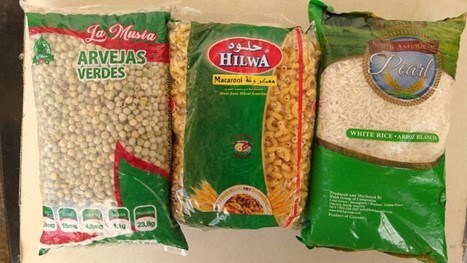Cuba, the Antithesis of Food Sovereignty

“Cuba moves ahead towards National Food Sovereignty.” It is always spoken as something just out of reach, in a future that never arrives.
HAVANA TIMES – Among the terms most misused by the Cuban regime is “food sovereignty.” The official press repeats it over and over, as though it were an incantation, as though simply saying were enough to magically make domestic production a reality and eliminate the need for imports.
It is always spoken as something just out of reach, in a future that never arrives: “Cuba moves forward in implementing the National Food Sovereignty and Nutritional Education Plan… Despite all adversity, Cuba strives for its food sovereignty… Food sovereignty and nutrition, one of the keys to Cuba’s economic and social strategy.” There is even a law, decreed last May, guaranteeing it.

The results of these efforts are on full display in Havana’s government-run stores in the form of so-called modules: rice from Guyana, pasta from Turkey, dried peas from Portugal, canned sardines from Venezuela and — perhaps most embarrassing of all considering it used to be Cuba’s most iconic product, sugar from Brazil.
These days, sugar as well as salt are are in short supply on the island, adding to popular discontent. Few people here believe that all these plans intended to benefit local producers, urban gardens or the local market amount to anything more than fairy tales. It takes more than two words to grow stuff.
Translation by Translating Cuba






Nothing reflects the disaster of the revolution better than the production of sugar.
In the 1950’s, Cuba was the world’s largest sugar producer. Today, Cuba imports sugar because it can’t produce enough for its own needs.
“People never vote as candidly as when they vote with their feet. In the twentieth century, before Castro and Che marched into Havana, Cuba took in more immigrants per capita than any other country in the Western Hemisphere—more than the United States, including the Ellis Island years. In 1958, the Cuban embassy in Rome had a backlog of twelve thousand applications for immigrant visas from Italians clamoring to emigrate to Cuba. From 1903 to 1957 Cuba took in over 1 million immigrants from Spain and sixty-five thousand from the United States.11 Jamaicans and Haitians jumped on rafts trying to enter Cuba. Now, not only do people risk their lives to flee, 2 million as of 1992, but half-starved Haitians a mere sixty miles away turn up their noses at the place. People used to be almost as desperate to enter Cuba as they are now to escape. ”
Humberto Fontova